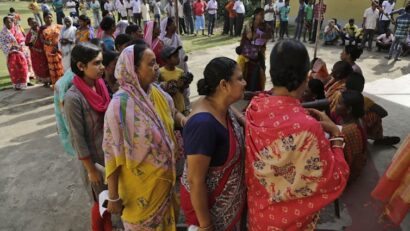
How England’s scrapped Sure Start centres boosted the health and education of disadvantaged children
The Sure Start programme was launched in 1999, with centres set up in communities across England to offer support to the most disadvantaged families.
These centres had significant investment and a broad remit that focused on improving the lives of families. They offered support for families with children aged up to five, as well as high-quality play, learning and childcare experiences for children.
They also provided healthcare and advice about family health and child health, as well as development and support for people with special needs. But after 2010, funding was cut significantly and many of the centres closed.
Now, a report from the Institute for Fiscal Studies (IFS) has laid out some of their benefits. The research found that access to a Sure Start centre significantly improved the GCSE results of disadvantaged children.
This builds on other research that has shown that Sure Start also had significant long-term health benefits. This research suggests that at its peak, Sure Start prevented 13,000 hospitalisations of children aged 11-15.
These findings come as no surprise to those who, like me, worked in the early Sure Start local programmes and saw the value of their family-led ethos. In my current role at Sheffield Hallam University, I am the director of a nursery and early years research centre which maintains this approach – and my research with colleagues has shown the benefits that it brings to both parents and children.
How Sure Start worked
There was no set model for how Sure Start local programmes should deliver the services they offered. This led to delivery plans being developed with the local community. The support offered was tailored to the challenges that local families were facing.
I was lucky enough to be the community development worker for a small children-and-families charity that led an early Sure Start local programme. As this developed, it kept the community at its heart. At its peak, the programme combined a 60-place day-nursery, a women’s health project, and training for parents. Health visitors and midwives working on the sames site provided wraparound support for children and families.
During this period, I was constantly struck by the huge changes that families made in their lives after receiving the support they needed at the time they needed it. I believe this was partly due to the early programmes having nurseries on site. This created a daily point of contact with families, building trust and relationships which then supported families’ – and particularly mothers’ – engagement with other services.
Having access to early years provision meant that special needs were identified early, and children had access to support services before they reached school age. This was a positive factor highlighted in the IFS report.
Learning from Sure Start
The nursery and early years research centre I now direct was opened by Sheffield Hallam University during the pandemic in a disadvantaged area. This project is the result of a partnership with Save the Children UK.
Drawing on the successes of Sure Start, the nursery was established with the motto “changing lives through relationships”. It had the explicit aim of building trust with families so that we can understand their challenges and work on solutions together.
Nursery worker and child at the Meadows Nursery, Sheffield.
Sheffield Hallam University, Author provided (no reuse)
The university runs the nursery, and together with Save the Children provides additional support to parents. This includes a breakfast club, training and volunteering opportunities, and links to health and wellbeing support. We also direct people to the services offered by the local authority family hub, which is based on site.
This “one-stop shop” approach means there is a team that can offer support across a range of issues, without families having to re-tell their stories to different agencies each time.
There are numerous case studies of parents making changes in their lives through the support at the nursery. A number of our parents have developed the confidence to train as community researchers, for example, while some are training to deliver a nurture course to other parents in the community. One of our parents who has experience of homelessness is now advising homeless charities.
I have always been convinced of the benefit of Sure Start’s approach, and the recent IFS findings add further evidence of its value. The families that we work with are facing multiple challenges, from food and fuel poverty to insecure work and housing. Now would seem to be a critical moment for this approach to be brought back, so that a future generation of children can benefit. Läs mer…








